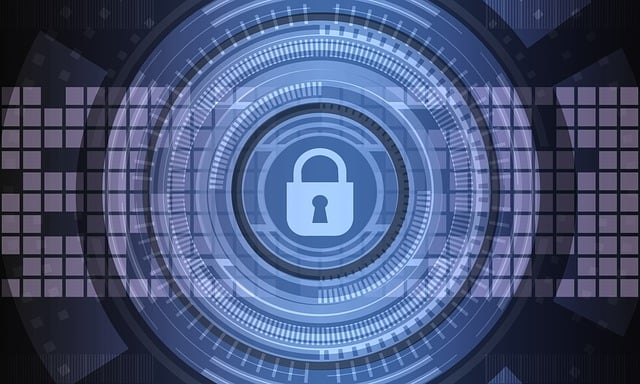The Department of Homeland Security (DHS) and the National Cybersecurity Alliance established National Cyber Security Awareness Month in 2004 to encourage Americans to adopt better cybersecurity practices. This special month is a collaboration between the government and private industry to create secure online experiences for everyone.
It is a time dedicated to raising awareness about the importance of cybersecurity. As a business owner, it’s important that you understand the basics of cybersecurity and take steps to protect your company from cyberattacks. Here are some tips for protecting your business from cybercrime.
What Is Cybersecurity?

Cybersecurity is the practice of protecting electronic information from unauthorized access or theft. This includes protecting data stored on computers, servers, and other devices, as well as data transmitted over networks. Cybersecurity measures can include firewalls, intrusion detection systems, encryption, and user authentication.
2022 has brought a plethora of complex and frightening cyber security problems, ranging from supply chain interruption to rising smart device risks to a continued labor shortage in the cybersecurity industry.
It is also projected that cybercrime will cost the world $10.5 trillion each year by 2025. Furthermore, worldwide cybercrime costs are predicted to rise by over 15% every year for the next four years. Criminals are taking advantage of concepts such as the pandemic, cryptocurrency, and the rise in remote working to target more victims.
This is why it is so important for businesses of all sizes to invest in cybersecurity. By taking steps to protect your business from cybercrime, you can help keep your data and your customers safe.
Categories Of Cybersecurity

There are various categories of cybersecurity. Some of them include the following:
Application Security
This focuses on keeping software and devices free of threats. A compromised application could provide access to the data it’s designed to protect. Successful security begins in the design stage, well before a program or device is deployed.
Network Security
This protects the confidentiality, integrity, and availability of data transmitted over networks, laptops, smartphones, and tablets. It is also the practice of securing a computer network from intruders, whether targeted attackers or opportunistic malware.
Information Security
This is the practice of protecting electronic information from unauthorized access or theft. It includes physical security, such as locking down computer rooms and using security cameras, as well as logical security measures like encryption and user authentication.
Operational Security
This includes activities such as data inventory, segregation of duties, data classification, and validation. This also covers the processes and options for managing and safeguarding data assets and the permissions users have when accessing a network.
Mobile Security
Nowadays, mobile security is a huge concern because more and more individuals are using mobile devices. This subdomain protects organizational and personal data found on electronics like tablets, phones, laptops, etc., against unauthorized access, device loss or theft, malware/viruses, etc.
Disaster Recovery And Business Continuity
This helps organizations plan for and recover from disruptive events, such as disasters, power outages, or cyberattacks. A well-designed disaster recovery plan includes procedures for backing up data, restoring systems, and maintaining communication during an outage.
Why Is Cybersecurity Important?

Cybersecurity is important for businesses of all sizes. Here are some of the reasons why:
1. Data Breaches Can Damage Your Reputation
A data breach is the unauthorized access of sensitive information, such as customer data or proprietary company information. If a business experiences a data breach, it can damage its reputation and lose customers. In addition, the business may be fined if the breached data includes personal information, such as credit card numbers or Social Security numbers.
Aside from this, businesses must comply with industry-specific regulations, such as the Payment Card Industry Data Security Standard (PCI DSS) or the Health Insurance Portability and Accountability Act (HIPAA). Failing to comply with these regulations can result in fines or other penalties.
2. Cyberattacks Can Paralyze Your Business And Destroy Critical Infrastructure
A cyberattack is a deliberate attempt to disrupt or disable computer networks or devices. Cyberattacks can cause businesses to lose money and customers, as well as damage their reputations. In some cases, cyberattacks can even paralyze businesses by taking down their websites or networks.
3. Small Businesses Are Especially Vulnerable To Cybercrime
Small businesses are often seen as easy targets for cybercriminals because they usually have fewer resources and less experience in cybersecurity than larger businesses. In addition, small businesses may be less likely to have insurance that covers the costs of a data breach or cyberattack.
4. Cybersecurity Is An Ongoing Concern
Cybersecurity is not a static field. New threats are constantly emerging, and old threats are constantly evolving. As such, businesses need to be vigilant in their efforts to protect themselves from cybercrime. They also need to keep up with the latest trends in cybersecurity so that they can better defend themselves against new threats.
Types Of Cyber Threats

There are many different types of cyber threats, and they can be divided into several categories. Here are some of the most common types of cyber threats:
1. Malware
Malware is short for malicious software, and it refers to any software that is designed to harm a computer or its user. Malware can take many different forms, such as viruses, worms, Trojan horses, spyware, and adware.
2. Phishing
Phishing is a type of social engineering attack in which criminals send emails or text messages that appear to be from a trusted source in an attempt to trick people into divulging sensitive information, such as login credentials or financial information.
3. Denial-of-service (DoS) attacks
A denial-of-service (DoS) attack is an attempt to make a computer or network unavailable to its users. DoS attacks can be carried out using a variety of methods, such as flooding the target with requests or data, overloading the target with traffic, or disrupting the connection between the user and the computer.
4. SQL injection
SQL injection is an attack in which criminals insert malicious code into a website’s database to extract sensitive information, such as credit card numbers or login credentials. SQL injection attacks can be devastating because they can give attackers access to a wealth of sensitive information.
5. Man-in-the-middle (MiTM) Attacks
A man-in-the-middle (MiTM) attack is a type of attack in which an attacker intercepts communication between two parties and impersonates each party. MiTM attacks can be used to steal sensitive information, such as login credentials or financial information.
6. Distributed Denial-of-service (DDoS) Attacks
A distributed denial-of-service (DDoS) attack is a type of DoS attack in which an attacker uses multiple computers to flood the target with requests or data. DDoS attacks are often more difficult to defend against than traditional DoS attacks because they come from multiple sources.
Ways To Participate In Cyber Security Awareness Month
There are various ways to participate in Cybersecurity Month. Some of them are as follows:
Become a security awareness Champion: You can become a security awareness champion and help spread the word about good cyber hygiene practices in your organization. As a champion, you can help promote online safety, host training sessions or webinars, and create your own campaign to raise awareness.
Attend a cybersecurity awareness month event: There are many cybersecurity awareness events happening throughout the month of October. You can attend one of these events to learn more about how to protect yourself and your organization from cyber threats.
Spread the word on social media: You can use social media to help spread the word about Cybersecurity Month. Use the hashtag #cybersecuritymonth to share tips, advice, and resources with your followers.
Report cases of cyberattacks: Report phishing, scam, and other cybercrime cases to the authorities. This will help them track down the attackers and prevent future attacks.
Cybersecurity Awareness Tips
There are many steps businesses can take to improve their cybersecurity. Some basic steps include:
1. Use MFA
Enabling multi-factor authentication (MFA) provides an additional barrier from cyberattacks. The benefit of multi-factor authentication is that, even if a username and password have been stolen or correctly guessed, it’s still very difficult for attackers to access the account.
If MFA is correctly configured, the user will be alerted to any attempts to log in to their account – and if they are alerted to an attempt to access an account, and it wasn’t them, they should be encouraged to report it to the information security team.
2. Educate Employees
One of the most important steps businesses can take to improve their cybersecurity is to educate their employees. Employees should be taught about the importance of cybersecurity and the dangers of cyberattacks. They should also be given guidance on how to protect themselves from attacks, such as not opening emails from unknown senders or clicking on links in suspicious emails.
3. Use Strong Passwords
Passwords are the first line of defense against cyberattacks, so it’s important to use strong passwords that are difficult to guess. Passwords should be at least eight characters long and should include a mix of uppercase and lowercase letters, numbers, and special characters. Businesses should also consider using a password manager to generate and store strong passwords.
4. Keep Software Up-to-date
One of the most common ways attackers gain access to systems is by exploiting vulnerabilities in software that has not been updated. It’s important to keep all software up-to-date, including the operating system, web browser, plugins, and applications. Software updates often include security patches that close these vulnerabilities.
5. Use A Firewall
A firewall is a piece of hardware or software that helps protect a network from cyberattacks. Firewalls can be used to block incoming connections from known malicious IP addresses or to block outgoing connections to known malicious websites.
6. Backup Data
Data backups are an important part of any cybersecurity strategy. In the event of a cyberattack, having a backup of all data can help minimize the damage and make it easier to recover lost data. Backups should be stored offline, such as on an external hard drive, so they cannot be accessed by attackers.
7. Monitor activity
Monitoring activity on a network can help identify suspicious behavior that may indicate an ongoing attack. Activity monitoring can be done using tools like a security information and event management (SIEM) system or network intrusion detection system (IDS).
Conclusion
Cybersecurity is important for businesses of all sizes. By taking steps to improve their cybersecurity, businesses can protect themselves from attacks and minimize the damage if an attack does occur.
Need Managed Security Services To Protect You From Hackers?
Strike Strategies offers a variety of security solutions to meet your needs. We can help you assess your security needs and choose the right service for your business. If you would like to learn more about our managed security services, please get in touch with us. We would be happy to discuss your specific needs and provide a proposal outlining our specialized security services.




